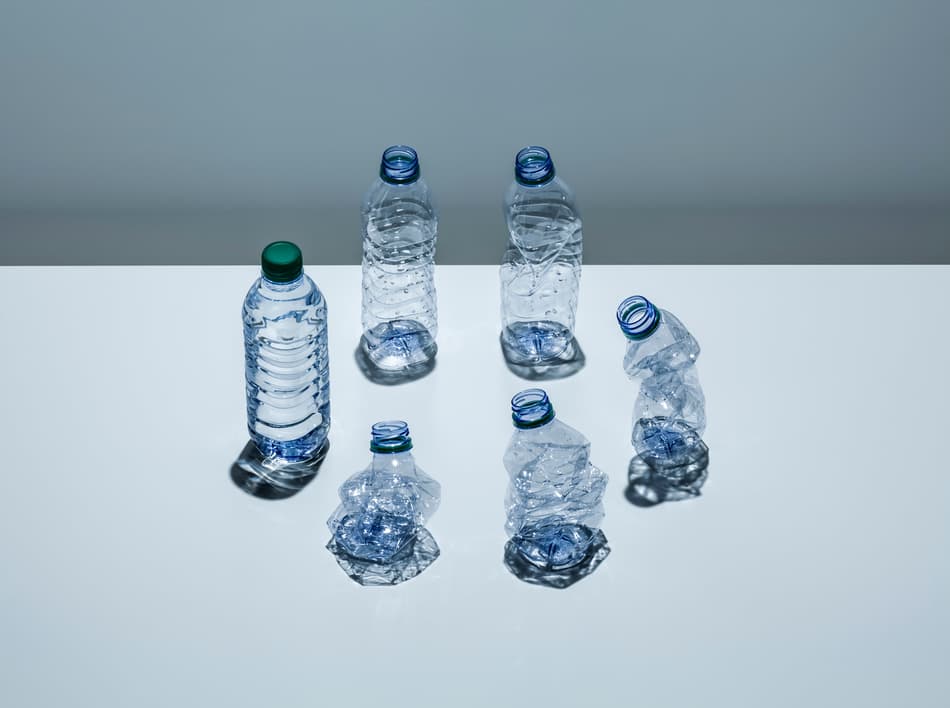A guide to Closed Loop recycling
A staggering 1.4 trillion cans and bottles are used across the globe every year, but shockingly only 9% are being recycled. 14% are incinerated and an even larger proportion of the world’s plastic bottles and cans are going into our oceans, streets and landfills.

The majority of consumers view plastic bottles and cans as single-use items, but when one is thrown into the trash, its journey doesn’t end there. This container can take more than 450 years to degrade.
Thankfully, looking after our planet and safeguarding our environment for our future generations is a becoming a greater priority for world leaders. There is growing momentum among governments, businesses and consumers to find ways of using resources more efficiently, preventing pollution and litter, and stimulating growth in the green economy, all through closed-loop recycling.
What is closed-loop recycling?
Closed-loop recycling is the process that ensures certain products are collected, recycled and repurposed into the same product, once its initial use is no longer required.
When it comes to beverage containers, closed-loop recycling ensures that valuable materials, such as plastic, aluminum and glass, are continually recycled back into bottles and cans, rather than being landfilled, littered or 'downcycled' into lower quality materials.
This way of reimagining recycling is best implemented through reverse vending machines, which see drink containers returned through an incentivized deposit return scheme. Around 40 markets around the globe have already adopted deposit return schemes and experience return rates of up to 98%
How does closed-loop recycling work?
When we collect recyclable materials, transform them into a new product and put them back into consumer circulation, we are forming a recycling ‘loop’. Despite appearing to be a single-use item, a discarded plastic bottle can actually be broken down and processed back into the same standard of plastic bottle, meaning it doesn’t get downcycled or thrown away. This removes the need to extract valuable resources to make a completely new one.
Closed-loop recycling goes beyond simply reusing resources and protecting the environment. It also enables high-quality material to remain in circulation and ensures that there is a demand for this material.
What is the impact of ‘downcycling’?
‘Downcycling’ is the common practice of recycling a material to create a new product at a lower quality and functionality than its original state, meaning it usually can't be recycled again. Although it is a way for plastics to get used again, it is not a particularly sustainable method as the recycled product often reaches the end of its life at this stage due to its lower quality status.
It is far more beneficial and sustainable for plastic containers to go back into the production of new plastic containers, helping to reduce the amount of lower quality material going back into circulation and the reliance on raw materials.
How does reverse vending enable closed-loop recycling?
Reverse vending machines are key to enabling closed-loop recycling, as they make the process simple and accessible to everyone. Consumers simply return their drinks containers to a reverse vending machine and the automated sensor technology collects, sorts and handles the used containers for recycling or reuse.
Using a reverse vending machine removes beverage containers from the general household waste stream, ensuring that they aren’t exposed to contaminants like broken glass, food or newspaper ink. This separation keeps the container material pure and ensures it is of high enough quality to be used again and again in the production of new bottles and cans.
The benefits of closed-loop recycling
There are several benefits to a more circular approach to plastic and container recycling. Not only is it the most sustainable way of manufacturing new bottles and cans, it also ensures longevity for our natural resources, preserving them to minimize our impact on the planet.
It reduces the number of containers going to landfill, littering our streets and polluting our oceans. Closed-loop recycling, achieved through the use of reverse vending machines, can significantly boost consumer recycling rates.
It also generates a number of ‘green’ jobs, enhancing the sustainability economy and ultimately raising awareness of the benefits of, and increasing the need for recycling. Closed-loop recycling has the potential to create jobs across the world in coming years, if we all commit to creating an environment that supports recycling.
TOMRA’s vision for ‘clean’ loop recycling
Being at the forefront of cutting-edge recycling technology for more than 45 years, TOMRA is leading the resource revolution. We are pioneering the idea of clean-loop recycling, the most efficient and effective process for recycling beverage containers in the world today. Beverage containers recycled through a deposit return scheme are collected and sorted by reverse vending machines, removing the risk of contamination from other types of waste. This means that the containers can maintain their food-grade status and can be recycled into new drinks containers, in a never-ending cycle of use and reuse, reducing the need to extract more natural resources from our environment and preventing waste from ending up in our oceans.
Put simply, the more we recycle, the less we take from our planet.
